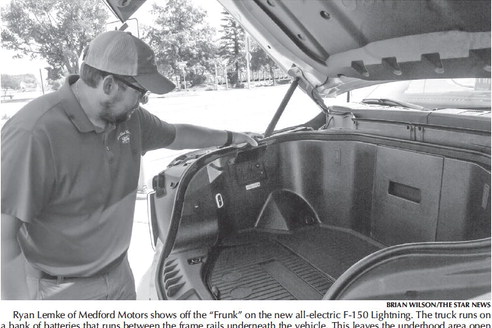Area gets first hands-on look at electric pickup


The first thing you notice when you climb into the cab of the all-electric Ford F-150 Lightning is what you don’t notice.
Other then the many whistles and...


The first thing you notice when you climb into the cab of the all-electric Ford F-150 Lightning is what you don’t notice.
Other then the many whistles and...